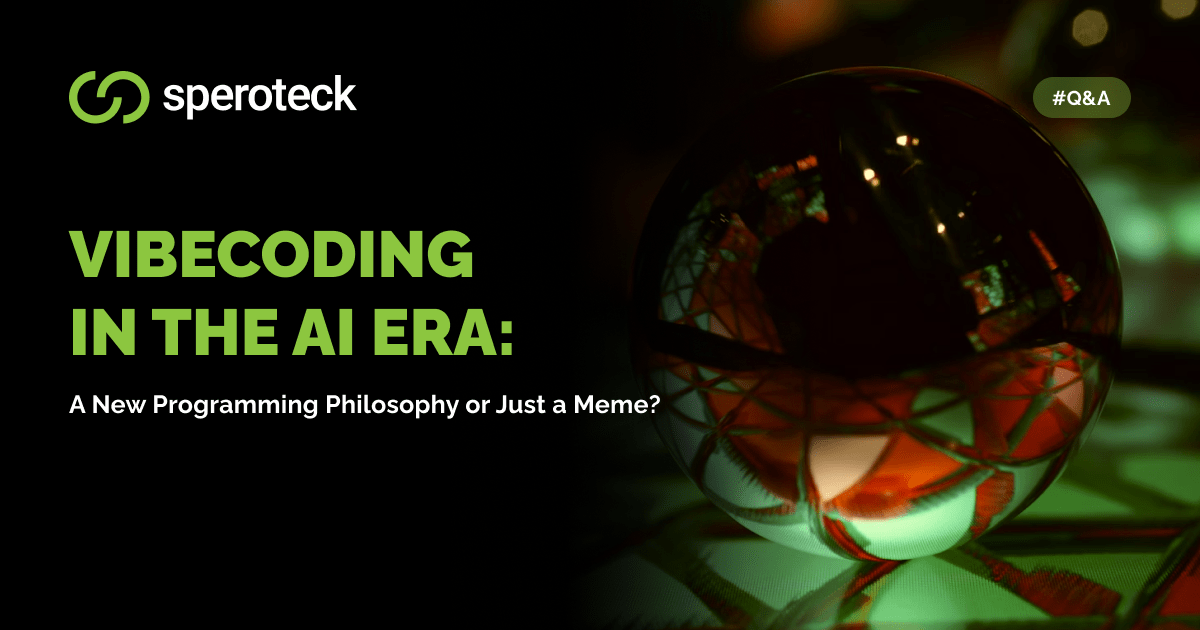
Vibecoding: a new programming philosophy in the AI era or just a trendy joke?
Date
The IT world is changing way faster than we can update documentation. With the advent of local and cloud-based large language models, in particular Cursor (based on Claude or GPT), GitHub Copilot or Replit Ghostwriter, not only new tools but even new approaches to development are being born. One of them is vibecoding. The concept is relatively new, a bit humorous and ironic, but despite this, it is already being actively discussed and implemented in professional circles.
What is vibecoding?
Vibecoding is a style of programming in which the developer relies more on feelings and hints from artificial intelligence than on clearly structured planning, documentation or design specifications. In other words, it is “writing code by vibe”, in the literal sense.
It combines:
- quick feedback from LLM (language models),
- improvisation without a rigid TK,
- inspiration from code examples from the network,
- minimal initial training.
Where did the term come from?
The term “vibecoding” itself began to appear in 2023–2024 on Reddit, X (Twitter), Discord communities, GitHub, and hacker forums. It became especially popular among young developers, hackers, and pet project authors. It is often used jokingly, although now vibecoding is turning into a very real phenomenon – a pivotal change in the way developers think in the AI era.
The term “vibecoding” went viral after a tweet by Open AI co-founder Andrej Karpathy, who describes an ultra-modern way of programming in which the LLM model is perfectly integrated with the development process, and the developer is more “controlling the vibe” than writing each line by hand.
Although vibecoding sounds like something superficial and chaotic, it can actually be very effective in certain situations:
- Rapid prototyping – An ideal tool for MVP (Minimum Viable Product) – without unnecessary time spent on structuring and architecture, it allows you to show a “live” demo version of the product in a few hours.
- Creative experiments – AI is good at suggesting non-standard solutions that would be difficult to come up with on your own. This is useful for UI/UX experiments, generative graphics, etc.
- Learning new technologies – if you don’t know how to start working with a new framework, LLM will be able to suggest a step-by-step learning path, generate the necessary visual examples and speed up your entry into a new environment.
- Solving specific small tasks – When you need to “sketch” a function, transform data, make a template or quickly check whether your way of solving a specific task works.
Despite its convenience, vibecoding does not replace a deep understanding of code and architecture.
Cons and possible risks:
Security – The generated code may have certain vulnerabilities: LLM models do not take into account all possible security best practices, creating potentially vulnerable code.
Architecture and integration – Vibecoding is useful when you just need to quickly “draw up” a framework. But it is not clear how it will further fit into an existing project with its patterns and clear structure.
Long-term support – Code generated “on vibe”, without comments, without tests, without explanations, in a month even the person who gave the LLM the task of creating it will not understand.
Loss of developer skills – excessive dependence on AI will make the developer less independent in classic coding.
The best approach to practical use of vibecoding is to combine the classical engineering discipline with the capabilities of AI.
In practice, it looks like this: you should treat artificial intelligence as an assistant or intern – it can quickly generate basic code, suggest interesting solutions to a problem or a certain structure, but the final verification and overall responsibility remain with the developer.
Such code necessarily requires review, testing, verification of architectural compliance and compliance with standards. It is the hybrid approach, when the speed provided by LLM is combined with the quality control provided by the developer, that allows you to achieve maximum efficiency without losing stability, security and maintainability of the product.
Artificial intelligence is rapidly changing the approach to development. If earlier programming was associated with thousands of lines of code written exclusively by hand, today we increasingly see developers working “together with AI”, delegating routine or part of the tasks to it.
Vibecoding is not a complete replacement for the classic engineering approach, but its addition, another tool in the skillset of a modern developer. The pros of this method are speed, flexibility and creativity. However, the cons are the lack of control, structure and long-term thinking.
The best approach is a conscious combination of vibecoding with engineering discipline: when the developer knows when to “give in to the vibe” and when to include critical thinking.



